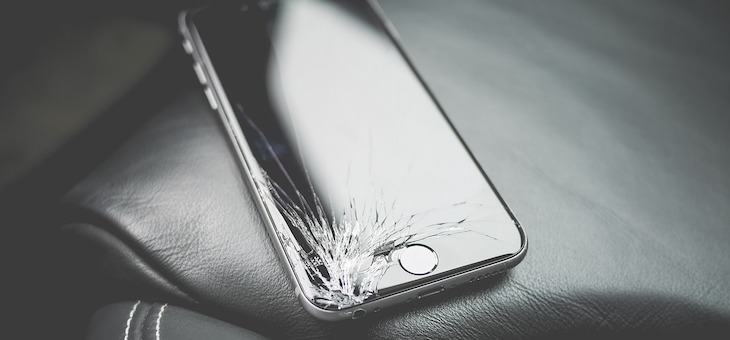
Un telefono cellulare su cinque acquistato all’estero e spedito via corriere o posta è contraffatto. La percentuale sale a livelli ancora più allarmanti per le console di videogiochi: una su quattro è un fake. Lo rivela un report dell’Ocse, l’organizzazione per la cooperazione e lo sviluppo economico che raggruppa 35 Paesi occidentali, che analizza il crescente fenomeno della contraffazione nel commercio di strumenti elettronici e di telecomunicazione.
Il report, redatto in occasione del forum 2017 sulla lotta alla corruzione e sull’integrità globale in corso in questi giorni, registra che i consumatori di batterie per lo smartphone, di caricabatterie, memory cards, carte con banda magnetica e lettori musicali sono sempre più spesso preda dei contraffattori. In base media il 6,5% del commercio globale dell’ICT (information and communication technology) riguarda prodotti “taroccati”. Un fenomeno favorito dall’insaziabile domanda di smartphone e di accessori ICT. I prodotti più contraffatti sono le console da videogiochi (quasi il 25% di quelli spediti all’estero sono falsi), telefoni e relativi accessori (poco meno del 20%) e i lettori musicali (poco meno del 10%), mentre il fenomeno riguarda molto meno strumenti per il controllo remoto, laptop, tablet e batterie.

I danni dell’elettronica taroccata sono di vario genere. Prima di tutto economico: i prodotti contraffatti infrangono i trademark e costituiscono un mancato guadagno per le aziende produttrici. Il rapporto stima che il fatturato dei prodotti ICT contraffatti ammontasse nel 2013 a 143 miliardi di dollari, con mezzo milione di sequestri fatti nel periodo 2011-13, ma il dato sarà nel frattempo certamente cresciuto. Il settore dell’ICT fattura globalmente circa 2.400 miliardi di dollari e cresce di circa il 6% all’anno. Quasi due terzi dei prodotti falsi sono spediti tramite servizi postali, ciò che complica non poco la ricerca e le indagini. Le aziende più danneggiate sono quelle statunitensi: quasi il 43% dei prodotti contraffatti sono di marchi americani, il 25% di finlandesi e il 12% di giapponesi. Il Paese da cui proviene il maggior numero di prodotti ICT contraffatti è la Cina. Inoltre beni contraffatti minano la fiducia del consumatore nei confronti di brand consolidati in un mondo in cui la reputazione dei marchi è un valore sempre più prezioso. Infine creano rischi per la salute, la sicurezza e la privacy del consumatore. Possono contenere sostanze pericolose come piombo e cadmio, i caricatori possono danneggiare gli impianti elettrici e provocare corti circuiti e incendi.
Nearly one in five mobile phones and one in four video game consoles shipped internationally is fake, as a growing trade in counterfeit IT and communications hardware weighs on consumers, manufacturers and public finances, according to a new OECD report.
Trade in Counterfeit ICT Goods finds that smartphone batteries, chargers, memory cards, magnetic stripe cards, solid state drives and music players are also increasingly falling prey to counterfeiters. On average, 6.5% of global trade in information and communication technology (ICT) goods is in counterfeit products, according to analysis of 2013 customs data. That is well above the 2.5% of overall traded goods found to be fake in a 2016 report.
Launched just ahead of the 2017 OECD Global Anti-Corruption and Integrity Forum on March 30-31, the report says the high value of smartphones and ICT accessories and insatiable demand makes them a lucrative target for counterfeiters, and cautions that the number and range of affected products is growing.
Counterfeit ICT goods entail health and safety risks, service outages and loss of income for companies and governments. China is the primary source of fake ICT goods, and US manufacturers are the most hit by lost revenue and erosion of brand value. Almost 43% of seized fake ICT goods infringe the IP rights of US firms, followed by 25% for Finnish firms and 12% for Japanese firms.
Counterfeits are goods that infringe trademarks. In an industry that relies heavily on intellectual property rights, ICT counterfeiting preys on consumers’ trust in established brands and poses risks to their health, safety and privacy. Counterfeit phones can contain more hazardous substances like lead and cadmium than genuine ones, while fake phone chargers can mean fire and electric shock risks. Fake intermediary ICT devices and components, including transistors, printed circuits and radio masts, are also being shipped.
The report estimates the value of global trade in counterfeit ICT goods at USD 143 billion as of 2013, based on data from nearly half a million customs seizures around the world over 2011-13. Almost two-thirds of counterfeit ICT goods are shipped by express and postal services, significantly complicating the screening and detection process.
©OECD
The ICT sector accounted for 5.5% of total value added in the OECD area in 2013, equivalent to about USD 2.4 trillion. World exports of manufactured ICT goods grew 6% per year from 2001 to 2013 to USD 1.6 trillion, with China exporting almost a third of the total.
The report estimates the value of global trade in counterfeit ICT goods at USD 143 billion as of 2013, based on data from nearly half a million customs seizures around the world over 2011-13. Almost two-thirds of counterfeit ICT goods are shipped by express and postal services, significantly complicating the screening and detection process.
The ICT sector accounted for 5.5% of total value added in the OECD area in 2013, equivalent to about USD 2.4 trillion. World exports of manufactured ICT goods grew 6% per year from 2001 to 2013 to USD 1.6 trillion, with China exporting almost a third of the total.




